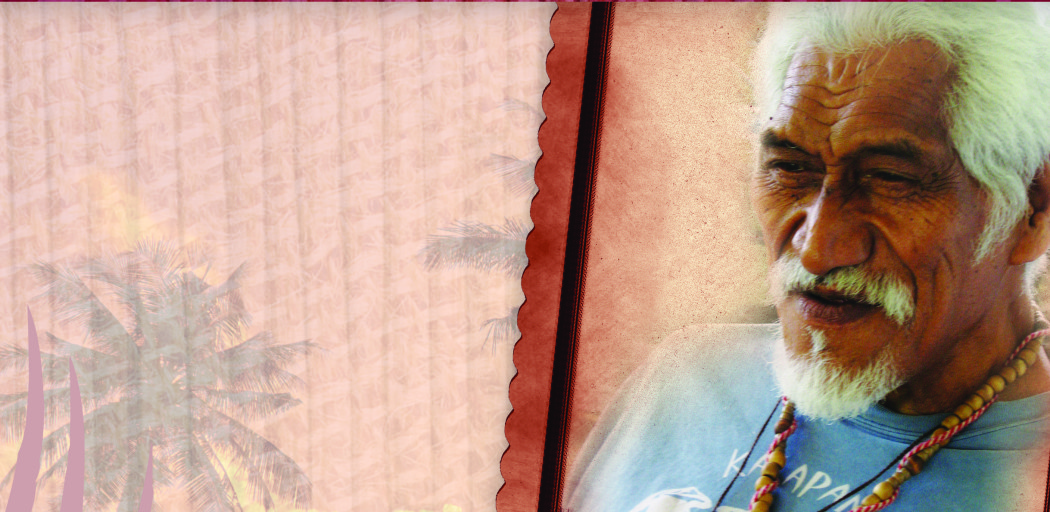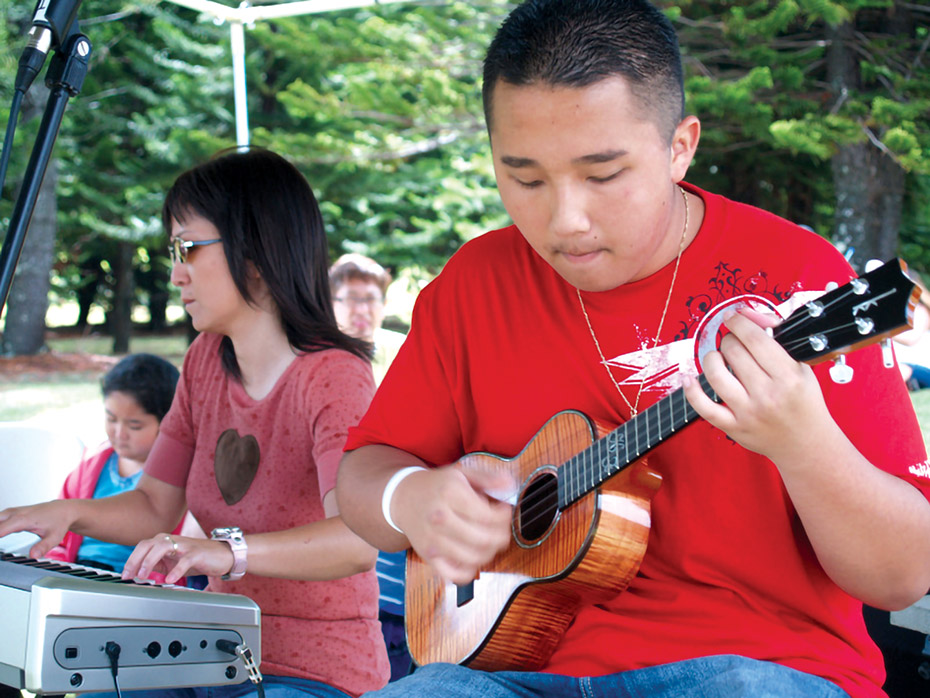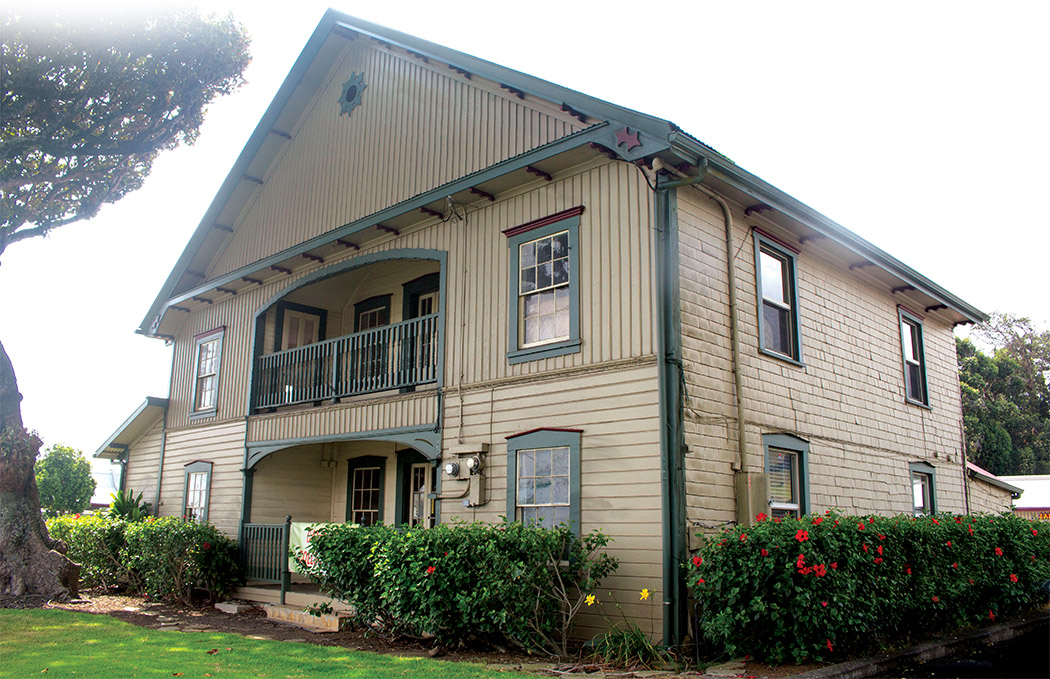
Preserving Waimea’s Historic Spencer House
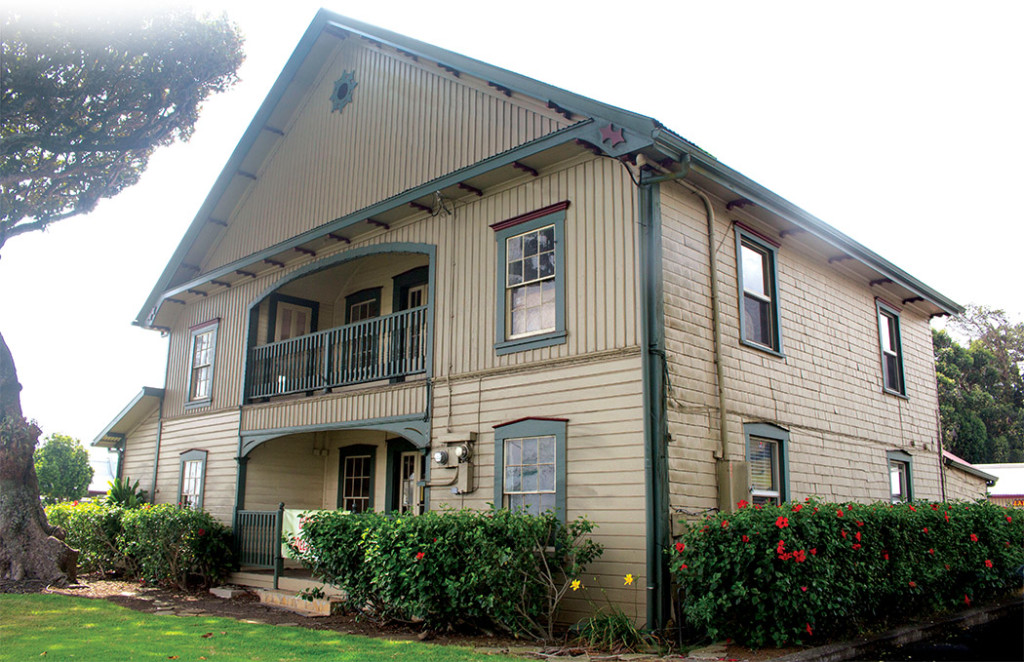
By Denise Laitinen
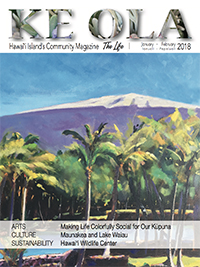
A courthouse, hotel, restaurant, gift shop, real estate and law office, and a family home; the historic Spencer House in the heart of downtown Waimea has been many things since it was built in the 1840s.
Before there was a Waimea Center or even Parker Ranch, there was the Spencer House. Considered to be the first house built in Waimea, it is not an exaggeration to say that the town of Waimea has literally grown up around this 20-room, two-story home. “It’s one of our treasures,” says Patti Cook, a long-time Waimea resident and president of the Waimea Community Association.
Today, the Historic Spencer House is home to a Welcome Center that showcases the history of the home and Waimea, as well as an antique shop and business offices. Linda Fischer and Rochelle Delacruz, owners of Calabash Collectibles, the vintage shop within the Spencer House, also manage the Welcome Center, which is open Monday through Saturday from 10am to 4pm. It’s a fascinating look at the history of the house and Waimea.
Home to Waimea’s Earliest Business Tycoons
William French was a successful businessman in Honolulu. He had a thriving business as a trader supplying beef, hides, and tallow to the whaling ships that frequented Hawai‘i. French was able to supply these materials because he had land on Hawai‘i Island, including storage and wharf facilities in Kawaihae, as well as extensive businesses in Waimea relating to the cattle industry. At one point, French hired John Parker to manage his store. Parker would go on to create the famous Parker Ranch, one of the largest ranches in the entire country.
Because records are sketchy, it is not known if French personally built the Waimea home after buying the three-acre property from Governor Kuakini in 1838 for the “price of a good horse”. The property, which included a slaughterhouse and a rock wall, extended from what is now Māmalahoa Highway to Waikoloa Stream. At the time, there was little else around.
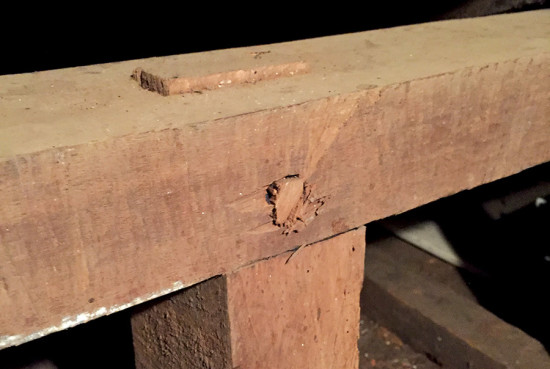
Paul Johnston, a Waimea resident who helped spearhead the restoration of the home in 2012–2013, notes that few nails were used in the construction of Spencer House. The house was built using mortise and tenon joinery to connect koa beams together.
The historic property is named for a subsequent owner. After French died in 1852, another successful Honolulu businessman, Francis McFarland Spencer, bought French’s Hawai‘i Island businesses and home. Spencer originally hailed from Australia and, after being shipwrecked off O‘ahu with his wife and children on their way to California, he opened a dry goods store in Honolulu. Spencer’s business partner, James Louzada, was one of the original three vaqueros brought to Hawai‘i Island by King Kamehameha III to round up wild cattle and teach Hawaiians cowboy skills. In the early 1860s, Spencer moved his family from O‘ahu to Waimea and took up residence at the home. Spencer’s wife Sarah died in 1862 and he went on to marry Martha Daniels, a woman of Hawaiian descent. Spencer, both his wives and several other relatives are buried in a small family graveyard next to the house.

Spencer became known for raising sheep and the quality of the wool he produced. At one point, Spencer’s flocks numbered 25,000 and his land leases covered 200,000 acres extending from Hilo to Hāmākua, up to the summit of Maunakea and the entire ahupua‘a of Pu‘uanahulu.
“Through my research I found that he was an entrepreneur and had many opportunities granted to him in his life,” says Maka Wiggins, a Waimea resident and great-great-great-great granddaughter of Francis Spencer. “Not only did he introduce new breeds of sheep to Waimea, he also established some of the first sheep stations that are now owned and operated by Parker Ranch, like Humu‘ula and Keanakolu.”
Maka adds that in researching her Spencer family geneology, “I was able to discover that Francis was trained in wood work and he was loved by the natives of Waimea who thought of him as a jovial man. I love that he was thought of as jovial. And looking at one of his portraits that’s exactly what he looks like.”
The First of Many Renovations
During the 1880s, the house underwent a significant renovation and expansion. As part of the remodel, the current two-story edifice was added to the front of the building, an additional staircase was added and two curved ceilings were incorporated into the main rooms on the first and second floors. We can assume the house renovation was completed by 1888 as someone inscribed “Boy Blue Nov 5th, 1888” in one of the home’s front windowpanes.
“There’s no record of what Boy Blue refers to or why the date is significant although lots of theories abound, many of them of questionable origin,” says Paul.
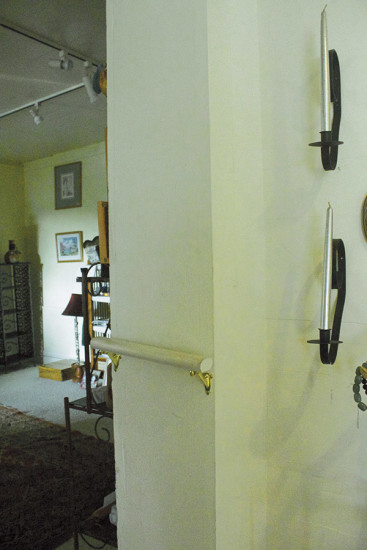
After Spencer’s death in 1897, his daughter Frances and her husband Richard Bickerton lived in the house and used the centrally located home as a hotel. Richard Bickerton was also a judge for the district of Hāmākua and the couple eventually moved to O‘ahu where he served on the Hawai‘i State Supreme Court.
For decades the house was a family residence, however, by the 1950s it had fallen into disrepair. “In 1985 the house was remodeled again,” says Paul. This time it was turned into a commercial building that included a showroom and gallery. Somewhere along the line, some of the Spencer family heirs leased the land to Puna Plantation Hawaii, Limited, the parent company of KTA supermarkets, which built the Waimea Center shopping plaza in 1989 around Spencer House. The strip mall of stores is located in what was once the backyard of the Spencer House and McDonalds stands where a grass shack stood when the house was originally built.
After the house was remodeled, a succession of businesses called Spencer House home, including an art gallery and a real estate firm. In 1991, Patti opened a gift shop selling locally made items within Spencer House called Cook’s Discoveries. Around the same time, Chef Maha Krann opened a restaurant in the front of the house called Maha’s Cafe. “It was a super popular restaurant,” says Patti, “very delicious.” More businesses used the space over the years, however, by 2011 the house was once again vacant and in need of repair.
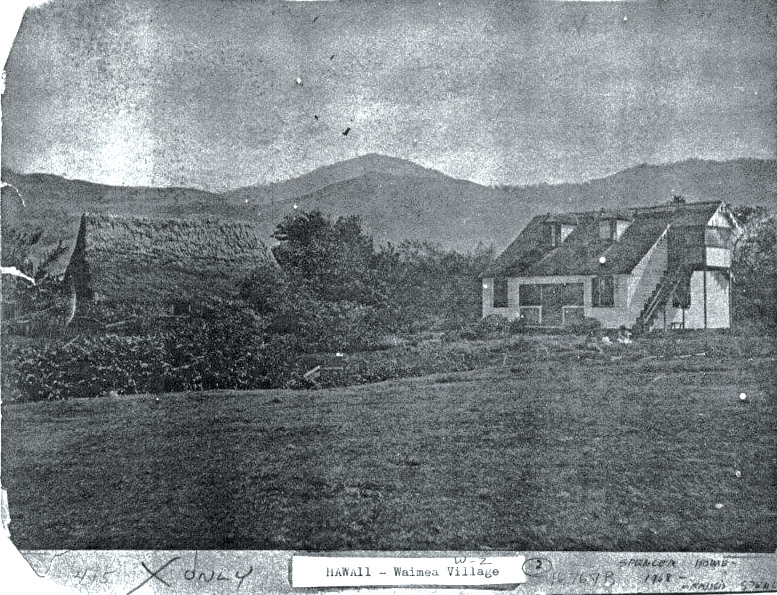
Haunted House
Because the large house sat dark and empty for long periods of time, it had gained a reputation for being haunted. “Old timers in Waimea will tell you the house is haunted,” says Patti.
“From my perspective, I never felt discomfort when I had a shop there, but I always felt protected. When music was playing there was a joyful feeling. It was like the house liked music. It sounds wacky but that’s the way it felt.”
A Community Effort to Restore Spencer House
Around 2011–2012, there was growing community interest in preserving the home, which is when Paul got involved. A former physician turned farmer, Paul owns Kekela Farms and runs the Waimea Town Farmers Market at Parker School on Saturdays.
“Spencer House got to a place where it needed significant renovation work,” says Patti. “It had been closed for years and needed a lot of work.” Paul is widely credited as leading the charge to restore the home.
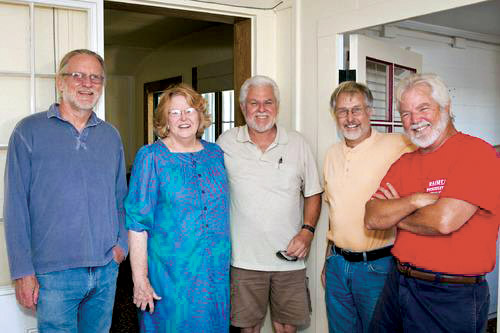
“It was Paul that did most of the talking,” says Patti. “He got to talking with Puna Plantation and they were amenable with us bringing the building back to life. We also talked to the Spencer family,” says Patti. “Initially, a group of us as friends worked under the umbrella of the Waimea Preservation Association. Almost all of us were also active on the Waimea Community Association board,” explains Patti. “Eventually we formed our own group called Waimea Alive!.”
Paul says the renovations took nearly a year and the Waimea Alive! group paid rent on the vacant property the entire time they were renovating it. “When we first went into the house it was kind of dirty and needed a lot of love,” says Patti. There were significant plumbing and electrical issues that needed to be addressed. Fortunately, many Waimea community members, including electricians and contractors, came forward to help with the renovations. Paul says the renovations got a large boost when Hilton Grand Vacations Club selected Spencer House as their annual volunteer project and 50 staff spent a day working on the house.
“They cleaned and painted and scrubbed,” adds Patti. “They hauled away a lot of junk, it was fabulous.” After a great deal of time-consuming work by many volunteers, a large party was held at Spencer House in November 2013 to celebrate the renovations.
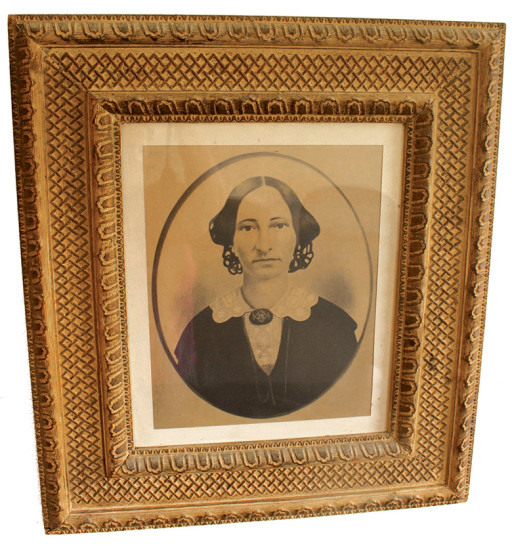
Many Spencer House descendants attended the 2013 celebration and donated family photos that are now on display at the Welcome Center. “I love that the home is there and being used by different groups,” says Maka. “I feel it is a staple of Waimea.”
At the time of the 2013 renovations, it was thought that the space could be used by local nonprofits or possibly as a co-working space. Those plans shifted over time and about a year ago Calabash Collectibles opened shop in the front of the house while the Nature Conservancy and other businesses rent office space in the back and upstairs. The co-owners of the collectibles shop explain the home’s history to visitors of the Historic Spencer House Welcome Center.
Spencer family descendants from around the country often stop by to visit when on island to explore the home that bears their family name.
Many in the community are grateful that the home was preserved as part of Waimea’s heritage.
“So many communities in Hawai‘i and across the country become a collection of fast food restaurants and shopping malls that aren’t architecturally meaningful,” says Patti. “We don’t want to be a place of fast food architecture. We want to be a place with a sense of history. Taking care of Spencer House really gives a sense a place and the heritage of who we are.” ❖
For more information about Spencer House contact: Facebook.com/HistoricSpencerHouse.
Mahalo Clark Realty Corp. – Home/Building Story Sponsor
